Let's talk...
About the drawings: We can browse the book and direct our child’s attention to the book’s facial expressions, and the gradation of colours from red, to orange, to yellow. We can ask our child: How angry does the book feel now? A lot or a little? How did you know that?
About feelings of anger: We can ask our child: What causes you to feel angry? What happens to your body when you get angry? What helps you to calm down?
Let's communicate...
We act out various daily events with different emotional states with our child; for example: we can ask them to act as if they’re eating pizza while angry, or combing their hair while scared, or reading a book while happy, and so on. This simple activity enables the child to identify andbe aware of their different feelings, which helps them control them.
Let's create...
We can build a “comfort corner” in the house with our child. We might put a toy that they like there, different drawings, a comfortable chair, a small blanket, a water bottle, and whatever our child wants from the tools that help them. And when they feel angry, we can ask them: Let’s go together to the comfort corner for you to calm down, and we’ll continue our talk there. We can maintain physical contact like patting on the hand or shoulder, and ask them from time to time: Do you still feel angry now? And we continue doing this until they calm down.
Let’s talk...
About feelings:
we can recall Sugar’s feelings in different situations, and we can ask our child: How did she feel? How did she manage to get the apples and who helped her?
About disagreements: Sugar disagreed with her friend Mina over an apple. We can suggest another ending to their disagreement.We can ask our child: Have you ever disagreed with your friend? How did you overcome it?
About similar situations: Have you ever faced a difficulty? How did you handle it?
About situations: How should we interact with people with special needs?
Let’s enrich our language...
We can look for new expressions in the book and explain them to the child, such as: landed on the ground, the sun was about to set, well-fed, swaying, and others.
Let's communicate...
Words of encouragement: The bird helped Sugar and encouraged her saying: “Don’tworry Sugar, we will find another way. ”We can think with our children about phrases and expressions that can encourage us during difficulties, such as: “You can do it,” “Ibelieve in you,” “What matters is that you keep trying.”
What am I good at? We can draw our child’s hand on paper and think together about characteristics that make them special and skills they are good at, and record them in the hand drawing.
Let's share...
We can prepare food together using apples, such as: cake, pie, juice, or cut up an apple and enjoy eating it together.
Let's practice...
We can train our kangaroo jumps; we can try jumping on one leg, then on both legs, forward,backward, and so on.
Let's research...
We can learn about the kangaroo: What are its characteristics? Where does it live? What does it eat? We might want to draw it and design a pouch for it from paper or fabric.
Let’s talk...
About feelings: We can track different situations that happened with Mina: How did she feel? And how would you feel if you were in her place?
About similar experiences: We can ask our child: Have you faced difficulty in learning? How did you overcome it? And did you try to ask for help?
About our superpower: We can talk with our child about their unique abilities and characteristics.We can write them down and encourage them to ask siblings, relatives,and friends about the special qualities and abilities they see in them.
Let’s enrich our language...
Let’s clarify new words and expressions: extraordinary, somersault, shake, guessed, and others.
Let’s create...
We can choose a new word together from the story and discover different ways to learn it.We can sing it, draw it, and act it out.
Let’s explore...
In our Arabic language, both colloquial and classical, there are many names for objects, creatures, or places that begin with the word “Um” (mother), such as Um Arba’a wa Arba’een(Ladybug), Um Al-Qura (mother of villages-Mecca). We can explore other names
Let’s talk...
About dealing with differences: We can ask our child: How was Cookie different from her friends? How did she feel? How did she find a solution to her problem?
About dealing with problems: We can our child if they ever felt different or faced a problem because of that difference. What did they do? How did they act? Did anyone support them? How did they do it?
Let’s create...
We can make a shell from household items and embark on different adventures from our imagination, narrating them with our words and movements.
We can ask our child to think of different ways to use various objects-spoon, piece ofcloth, book, pen, shells, and others…
Let’s explore...
We can visit the beach, search for living creatures on the shore, such as: turtles, crabs, seaweed, shells, and others. We can collect shells to make a necklace or picture frame.
Let’s communicate...
Our society includes different people, some of whom face various challenges like visual impairment and limited mobility. We can take our child on a tour around town and look for signs indicating accessibility for people with special needs. We can take pictures of them with our phone camera and talk about them and the importance of accessibility in general.
Let's talk...
About characters in the story: We can compare the traits of the merchant, the tiger, the bull, and the rabbit. We can deduce what distinguishes them through their behaviour.
About the concept of justice and fairness: Does doing good always bring good in return? We might initially think that the good deed the merchant did for the tiger would lead to a disaster, but the cleverness of the rabbit shows us a different outcome. What can we conclude?
About the trust: A simple word that can be expressed through feelings, thoughts, and actions. We can recall people we trust deeply. How did that trust develop?
About experiences from our lives: Have we done a good deed and offered help to someone? We can recall experiences from our lives where we received help or provided it.
Let’s enrich our Language...
New words and vocabulary: We can familiarize ourselves with unfamiliar words and understand their meanings.
Punctuation marks: We can observe question/exclamation/quotation marks. What do they mean?
Proverbs and sayings: We can search for proverbs, sayings, and admonitions that talk about doing good, justice, caution, and other meanings that captivate us.
Let's create...
Role-playing: Each of us plays the role of one of the story’s characters. We can think about their situation, feelings, and expressions.
Courtroom game: We can choose situations from our daily lives, and each of us can play a role in defending a different position. Who among us is the judge/accused/lawyer? Who supports another character?
Let's explore...
Nature: We can go on a hike to the nearby nature. Which trees do we notice? What animals might we encounter? We capture natural scenes and compile them as a memory of our enjoyable outing together.
Animals around us: Are there any pets in our neighborhood looking for shelter or food? How can we help them safely? (We might prepare a box for cat food or a bird feeder).
Let’s talk...
About feelings: Tilda was happy at the beginning of the story, and suddenly she felt upset and anxious, and her feelings were reflected in the drawings. We can follow the drawings and ask our child: How does Tilda feel? Why did her feelings change? How were her feelings reflected in the drawings? Did you ever feel down? how did you feel? Who supported you?
About sources of strengths: Tilda felt happy at the beginning of the story. We can ask our child: What are the things that make Tilda happy? What are the things that make you happy? We can share life experiences in which we felt failure and despair with our child. We can talk about the things that helped us overcome them, such as talking to people who are important to us and relying on memories of interesting experiences in our lives.
About sources of strengths: Tilda felt happy at the beginning of the story. We can ask our child: What are the things that make Tilda happy? What are the things that make you happy? We can share life experiences in which we felt failure and despair with our child. We can talk about the things that helped us overcome them, such as talking to people who are important to us and relying on memories of interesting experiences in our lives.
Let’s try and achieve...
We try so we can achieve more: With our child, we can identify a number of goals or challenges that they want to achieve, with a set time period. For example, having goals for household chores, such as: making the bed or organizing the closet at a record speed; commitment to throwing out the garbage; Cleaning the table – and other goals they may want.
Let’s enrich our language...
We can enrich our children’s emotional dictionary with motivating words that we adopt in our dialogues with them, such as: be strong; continue in this way; you did well; amazing; Blessed are your efforts; Be what you want to be; be as you will; you are brave; you’re great.
Let’s explore...
Tilda learned a lesson from the little ladybug. We can look at one of the living creatures around us with our child. Which ones can we learn specific skills or qualities from, that may motivate us to keep trying?
Let’s create...
With our children, we can bring cards on which we write words of encouragement, or we record the things that our children can do and make them feel empowered and happy, and put them in a jar. Children then can read a card every day, to instill in them a sense of ability and strengthen their emotional immunity.
Let’s talk...
-About the mouse’s feelings: We can read the story with our children a few times. We can talk about the mouse’s feelings from the beginning to the end of the story. We can also ask our children how the mouse feels and why she feels that way in each event of the story.
-About feelings of shyness, fear and nervousness: We can ask our children if they have ever felt the feelings the mouse had. When did they feel like that? Who helped them deal with these feelings? and how?
-About disappearing and hiding: We can ask our children if they ever felt the need to hide or disappear like the mouse did. When did that happen? And why?
-About our safe place: The mouse hid behind the curtain, and there, she felt safe. We can ask our children: What places make them feel safe and comfortable at home? And why?
-About skill: The little mouse was skilled at hiding. We can ask our children about the things they are good at, and we can talk to them about them.
-About adaptation in the beginnings: We can talk with our children about the feelings they had at the beginning of different stages or experiences they went through for the first time, such as talking about their first day at school, a new course, or the birthday of a new friend. Together, we can look for ways to help them cope.
Let’s explore...
-Magical Hand: Moonlight School is a night school for teaching magic. We can search online with our children for videos of fun sleight of hand magic tricks that can be used with children.
-Hide-and-seek: Miss Moon played a game of hide-and-seek with the animals. Hide and seek is a fun game that requires mental and social intelligence, and we, the parents, played it during our childhood. We can play hide and seek and have fun with our children.
Let’s have a conversation...
Let’s have a conversation about feelings: We can follow the feelings of the mole and the wolf with our children. We can name them and discuss the reasons for why they felt this way.
Let’s have a conversation about personal space: Mole liked his personal space. He loved his house, his bed, the smell of dirt and the darkness around him. We can ask our children about their favourite place/corner: Why did they choose it? What do they like to do on their own?
Let’s have a conversation about dealing with problems and overcoming fear: The mole and the wolf were lost and strayed away from their homes, but they were able to support each other and return safely. We can discuss the following with our children: How do we feel when we are lost? And how should we act? We can listen to them and direct them on how to act.
Let’s have a conversation about the formation of friendship: The mole and the wolf are two different animals, but they were able to become friends when they felt and supported each other. We can ask our children: How do the mole and the wolf resemble their friends and how are you different from them? What does it mean to feel the other or sympathize with him? How did the mole and the wolf support each other, and how did they become friends? Have they ever felt sympathy for their friend, or has someone supported them and become their friend?
Let’s act...
Let’s act getting Lost: We give our children a similar scenario that the mole and the wolf faced, and we act out how we would act if we got lost. We can take turns with our children, give them a model to deal with the problem, and talk to them about it.
Let’s enrich our language...
Let’s enrich our language The story is rich in vocabulary such as: humming; heaped, dazzle, horizons; etc. We can explain them to our children before reading and immediately after reading them in the text.
Mental and emotional dictionary: the story contains mental vocabulary, such as: imagination; decided; realized; fake/unreal. It contains emotional vocabulary, such as: poetry; in love; amazed; fear; feeling reassured and confident. It is important that our child acquire these new words and can use them in their daily life to describe and express emotional states and ideas, and to facilitate their use during dialogue.
Let’s play together...
Let’s use a blindfold: The wolf and the mole played in the dark and had fun. We can blindfold ourselves and play a game where we search for our children when blindfolded while our children try to escape from us.
Let’s explore...
Let’s explore Mole’s Life: The mole is a special animal that lives underground. We can search with our children for information on the Internet or encyclopaedia about it (you can explore other animals featured in the story as well).
The Blind: We can suggest to our children to put themselves in a blind person’s shoes, to sympathize with them and describe their feelings and the challenges they face.
Let’s communicate...
We invite our child’s friends to visit our home, and we contribute to strengthening our child’s social relationships.
We can discuss...
About the title: We can discuss the title of the story “The Cow that Laid an Egg,” and we can ask the children: Does the cow lay eggs?
We can ask...
About the concept of the unique and the special: We can ask the children: What is meant by unique and special? What are things that are common and normal? What are the special things that distinguish us and that we do differently? When do we feel special? Has anyone given us that feeling? Do we do things that make others feel special?
About trickery...
About trickery: The chickens used a trick to support the cow. What is the trick? Why did the chickens use it? What did the characters in the story think about it, and how did each of them feel? We can follow the drawings and talk about them. We can ask the children: Did they ever use a trick? How? Why? How did they feel?
A Fun night...
“A Fun night” – we can arrange a family session, grab a book of jokes, laugh and have fun together. We can also come up with some funny jokes and stories.
We can write...
We can write a funny book adapting the collage style by using newspaper clippings and colors to create funny scenes, such as sticking a chicken’s head on a cat’s body – for example.
We can browse...
We can browse the encyclopedia, or the Internet, and search for different animal species and how they breed.
We can look...
We can look for videos showing the stages of egg hatching. We can watch it and talk about it with the kids.
Let’s talk...
About the shoes’ feelings: We can read the story with our children several times. We can trace the drawings, and talk about the feelings of the shoes from the beginning to the end of the story.
we can ask the children: How do the shoes feel? We name the feelings, and
We ask them: Why did they feel this way?
About overcoming stress and anxiety: How can we help the shoes overcome stress, fear and anxiety? How can we help them calm down?
About our experiences in overcoming anxiety: We can share an experience that caused us to feel anxious with our children and tell them how we overcame it. Then, we can ask them about an event which made them feel stressed and anxious, and how they were able to overcome these feelings.
About friends in kindergarten: We can look at the last page and half of the book, and ask our children about what they do and how they feel in kindergarten, what we feel about them, and what we think about them. Then we can talk to our children about their kindergarten friends: What do they do? How do they feel?
About courage: On page 28 of the book, Lina mentions the shoes and tells us about the scenarios in which they were able to be brave and overcome anxiety and fear. We can talk about those situations, we can describe each event and the feeling that goes with it, and we can remind our children of events where they overcame their stress and fears, and were also brave.
Let’s create...
Safety box: With our child, we can prepare a special box, decorate it, and inside it, we can put a family picture and other items that make our child feel safe. In coordination with the teacher, we can ask that the box be placed in kindergarten, to be given to our child when they feel longing for home, and when they face some tension and anxiety.
Let’s act...
With our child, we can act out what they can do when they feel anxious and nervous in kindergarten (for example: to go to the teacher and share their feelings with them; to take their safety box, etc.).
Super Phil can...
Super Phil can fly in the sky, Aunt Zelda is a brilliant seamstress, and Filo is brilliant in devising tricks. We talk about the things that our child does brilliantly and that make him “super”.
We imagine that...
We imagine that the two elephants come across a herd of giraffes, or a group of bears, or frogs in the puddle. Which tricks may Filo devise to bypass the animals?
We think about...
We think about why illustrator drew Filo and Aunt Zelda in different colors while he drew the other elephants in gray.
A family workshop...
A family workshop to design fashion that makes us with superpowers! We need old clothes, fabric dyes, and some small pieces for decoration like buttons, feathers, shiny fabrics, etc.
We can recall...
We can recall the experience of learning a new skill with our child, such as riding a bike, or crossing the street. What prompted him to learn this skill? Who helped him? How did he learn it? It is also nice to share with our child our experiences in learning skills such as using a computer or a mobile phone, etc.
We can talk...
We can talk with our child about the things that he can do (such as assembling a certain number of puzzle pieces, preparing simple food, etc.), and about the things that he wants to do and is not yet able to. We point out that many skills develop during the course of our growth, as well as with practice.
We can chat...
We can chat with our child about the emotional block that Elba is dragging. What does it consist of? Do we sometimes feel like we’re dragging a similar one? when?
Together, we can...
Together, we can recall what Norris did with Elba to ease her grief and reduce the weight of the block that she was dragging. We can encourage our child to think of other ways that Norris supports Elba.
We may want...
We may want to talk about a similar experience in our family. How can we support each other in times of trouble and sadness?
The book is...
The book is entitled “Maybe Tomorrow.” We can try to think of different possibilities to complete the sentence.
We can look...
Together, we can look at the last drawing in the book, and compare it with Elba’s drawings on other pages. What is different about it?
Together, we can...
Together, we can recall the situations that Fares went through during his day, and that led to the emptying of his bucket. How did he feel? We can talk about other situations that Fares would have encountered at home, in the street, and at school, which would empty his bucket.
With our child...
With our child, we can remember the situations in which Fares felt that his bucket was full. How did Fares feel in every situation? Can we imagine other situations in which he feels his bucket getting full?
How do we encourage...
How do we encourage and help others in our daily life? We can chat with our child about what they are doing and what they can do to achieve that.
We can write...
We can write the title “We are a family that fills buckets” on a large paper, on which family members can record actions and words that help them fill buckets, such as saying thank you, helping with housework, sharing games with siblings, and others.
Together, we can...
Together, we can look at the cover of the book, and talk about the meaning of “trouble” in the title by looking at the expressions on the faces of the Simsim family.
We can recall...
We can recall the reactions of every friend who hosted the Simsim family. What would we do if the family needed our help? We can try to remember an experience where we hosted a family, some relatives or friends. What made us happy, and what bothered us?
Our family may...
Our family may be one of the families that moved once to a temporary residence – perhaps to the house of a relative or friend – due to repair work in the house, or a long trip, or otherwise. With our child, we can recall this experience: What did they miss at home?
Let’s get to know...
Let’s get to know the members of the Simsim family: the rabbit, the lizard, the scorpion, the mole, and the jerboa. Where do all of them live?
The drawings...
The drawings of the story convey the feelings of the characters in an accurate and expressive way, such as anxiety, fear, sadness, and joy. We can look at the characters’ faces and their body movements. How do we express these feelings with our bodies?
At the beginning...
At the beginning of the story, the other fish greet Caspion with nice words (hello, good morning, how are you?) We can chat with our child about phrases that we use to greet others.
The fish express...
The fish express how proud they are of Caspion with phrases such as: you are amazing, one of a kind, etc. Which phrases would our children prefer us to use to encourage them? We might want to write them down on small pieces of paper, and put them among their things: in their bag, or in their closet, or stick them on the mirror in their room.
Caspion is attacked...
Caspion is attacked by the shark, so she runs away, screaming for help. What would we do if we were in danger?
The whale rescues...
The whale rescues his friend by using his physical strength. We can talk with our child about situations in which they rescued a friend or relative using their physical strength, their intelligence, or other skills.
There is a special...
There is a special friendship between Caspion and the big whale, despite the difference in their size. We can talk with our child about friendships that they or we have with people who are different from us. What do we like about their friendship?
We can explore...
We can explore marine life in the story. Which other creatures does our child know? They may want to draw them.
We can go...
We can go on a visit to an aquarium or an ocean/maritime museum. This could be an exciting activity for all family members. Buckle up and let’s go!
Together, we can...
Together, we can look at the drawing of the sun and the drawing of the wind in the beginning of the book. We can talk about the colors of each drawing. How do the colors of each drawing make us feel?
We can look...
Together, we can look at the drawings of the wind, and search for signs which characterize its movement. We can look together through the window: Is the wind blowing at this moment? What is it doing?
Some people like...
Some people like hot weather and others prefer cold weather. What do we like to do on hot days? And what do we enjoy on cold days?
We can dramatize...
We can dramatize the story by turning it into a play and acting it out to family and friends. What would the sun’s mask and the wind’s mask look like?
With our child...
With our child, we may wish to explore the effects of the wind on different objects. We can blow on a stone, a paper, a feather, and a spoon. Which objects fly easily? Which ones do not move, or move with difficulty? Why?
We can recall...
Together, we can recall situations in our day in which we behave like the wind, and others like the sun. What was the result of each action?
Which features in the story...
Which features in the story suggest that it’s an old tale? Do we know any cities like the ones in the book?
We can talk...
We can talk with our child about the different feelings that Mint experiences. When does she feel angry, when does she feel down, and why? Do we sometimes have similar feelings? when?
We can chat...
We can chat with our child about what Mint could have done every time her drawing was destroyed. This helps our child to see alternative ways to solve a specific problem.
Sometimes our child...
Sometimes our child feels frustrated when they try to do something beyond their capabilities at that age. We may want to have a conversation with them about things that they can do, and things they were not able to do last year (such as: riding a two-wheel bike, walking to the nearby store alone, etc.)
What do they like...
We can chat with our child about their relationship with their older or younger siblings, or their relationship with another child in the extended family. What do they like about each brother/sister? What makes them upset about his/her behavior? What things do they enjoy doing with their siblings?
Big brother/sister’s...
“Big brother/sister’s room is always nicer!” A phrase we hear often from our young children. We can chat with our child about what they like in the older sibling’s room, and what they like in their own room. Together, we can think of simple ways to make their room a more comfortable and enjoyable place for them (maybe we decide to paint a wall with a nice color, or hang some pictures on it …)
A paper-cutting workshop...
A paper-cutting workshop! We can encourage our child to fold some papers and to trim the edges in a different way each time. What shapes do we get?
We can stop...
We can stop at the drawing of the child after his tower had collapsed. We can talk about how the child feels at that moment. What parts of the drawing tell us how he feels?
We can recall...
We can recall the animals’ reactions. How did each animal try to help the child? If we were in the child’s shoes, would we accept the help of one of the animals? which one would it be?
The rabbit helped...
The rabbit helped the child by listening to him, as he was expressing his anger, sadness, frustration, and his desire to build a new tower. With our child, we can look at the drawings of the rabbit, in each one: How did the rabbit’s body language show that he was listening to the child? (He stayed close to him, grabbed his hands, looked at him, searched for him under the box …)
We can talk...
We can talk with our child about a similar situation they went through, in which they felt sad or angry. We can try to remember what helped them calm down and start over. We may notice that our child resorts to their doll, especially the one with soft fabric, to convey their feelings – which is a normal behavior for kindergarten children – but it does not substitute our presence next to our child, and our sympathy for them.
With our child...
With our child, we can recall an experience they went through in kindergarten or at home, in which they supported a friend or a grieving relative. This is an opportunity to explain to our child the importance of being compassionate and supportive of others. We may wish to share a personal experience with our child, with family members, friends, and co-workers.
Do we have...
Do we have wooden cubes or empty plastic boxes in our house? Let’s have fun building a model with our child. If it breaks down, it’s okay, we can always build a new one, and it will definitely be cool!
We can chat...
We can chat with our child about things that make them afraid. We can encourage them to talk about everything: What exactly frightens them, and which feelings do they experience physically at that moment?
People differ in...
People differ in their physical reactions in situations of fear, some of them become irritable, sweat and feel hot, and others feel paralyzed, or they may feel cold. It may be helpful to share what scares us with our child, and how we physically feel in moments of fear.
What can help...
What can help us relieve our fear in each situation? Together, we can think of practical ways that suit our child’s abilities, such as asking for help, breathing deeply, or turning to someone they trust.
Often, when we...
Often, when we materialize the source of our fear, we feel that we are in control of it, and this reduces the severity of its impact on us. We can encourage our child to draw what they are afraid of, or to shape it with playdough.
Together, we can look...
Together, we can look at Rabbit’s home on the first pages of the book, and at its contents and details. Which features tell us about Rabbit’s love for carrots? We can read the titles of the books on the shelf and think of a title for a children’s story about carrots that Rabbit could add to his library.
Rabbit’s friends...
Rabbit’s friends try to advise him not to bring all his carrots into their homes, but he does not listen to them. We can chat with our child about everyday situations that happen at home or in kindergarten, in which the child or a family member ignores the advice of others, and the consequences thereof. When does it help us to listen to the advice of others?
Although Rabbit...
Although Rabbit destroyed his friends’ homes, they stayed with him and helped him. Did we go through a similar situation with our friends? How did they feel, and how did we feel?
We can chat...
We can chat with our child about things that we share as members of a family, and about other things that we do not like to share. We may want to talk to them about items that they can share with others, such as toys, books, etc.
The drawings in...
The drawings in the book are full of posters. This is an occasion to chat with our child about the signs they frequently see in the streets, and to draw their attention to them while traveling.
Are there many carrots...
Are there many carrots in our fridge? Rabbit may be able to help us by giving us suggestions for delicious food and drink recipes using carrots. Our child will enjoy joining us in making a nutritious carrot juice, or maybe a delicious carrot cake!
We follow Tarek’s...
We follow Tarek’s ego bag that he carries throughout the story: does its size and color change in the course of the book? What about all its different shapes?
We talk to our child...
We talk to our child about our invisible bag that we carry sometimes on our back when we feel stressed or sad. When do we feel the heaviness of the bag? What might help us to relieve the heaviness?
Our child might enjoy...
Our child might enjoy a conversation about things he likes to do alone and the other things that he likes to share with people.
Burden bag...
“Burden bag, and happiness bag” game! We give each family member two bags one for the things that burden them and one for the happy things. Burdens can be heavy things like blocks or kitchen utensils, while happy things can be balloon or feathers. This is a good occasion for the family to hear about each other’s burdens and happiness and find ways to support each other.
This author/illustrator is...
This author/illustrator is known for her use of black and white colors. We can think together why she chose to use those two colors adding a little bit of red.
Let’s look at...
Let’s look at Winnie’s room. What are the differences between Winnie’s room and ours? Encourage your child to read the clock on the wall, follow the clock hands and read the time as it shown along the story.
Winnie tries to change...
Winnie tries to change an apple into an orange using her defective magic wand with unexpected results. Let’s imagine other things that the apple could turn into if we had a magic wand and said, “abra kadabra.”
Wilbur the cat...
Wilbur the cat hurries to help Winnie, and looks hard for a new magic wand. We can recall an incident where our child helped family members or friends when they were in need. What did he feel? It would be good to share with our child our experience helping other people and how this helped to build good relationships.
The other magicians...
The other magicians ask Winnie about her magic ward, but she does not say anything. Does it happen to us that we don’t want to share with other people information regarding ourselves? Why?
The magic city is...
The magic city is full of weird magic stores; store for magic clothes, store for magic food and etc… imagine we are walking in this city, what other stores might we see? How would a playground look in this city? Maybe your child would like to draw it.
Family activity...
Family activity: Together, make Winnie’s hat and magic wand, and Wilbur’s mask! You can find illustrations in parents’ suggestion page on our website – www.al-fanoos.org
We can have...
We can have a conversation with our child regarding the “incidents” that happened to Saffour. What caused each incident? In your child’s opinion, what was Saffour’s feeling? Do similar incidents take place at home or at the kindergarten? How do they make us feel? We might like to with share our child incidents we faced during the day and tell him how we dealt with them.
Saffour found out...
Saffour found out that his long neck and leg, rather than being a problem, allow him to help his little new friends. We can talk with our child about things he can do and other things he still cannot do. What might help him to develop specific abilities?
We might look...
We might look at a photo album with our child and see his growing process, as a way to tell him “the more you grow, the more you will be able to do.”
Look around...
Look around the house together. Are their ways to make it easier for him to do tasks alone? Such as: are the toy shelves low enough for him? Is there a small chair he can stand on to reach the sink? We can find safe ways to make it easier for our child to use things at home.
Saffour was looking...
Saffour was looking for friends who would make him feel comfortable and spontaneous. This is an opportunity to talk with our child about his friends in the kindergarten, and why he likes being e friends with each one of them.
The illustrator uses...
The illustrator uses random colorful spots on the background. It would be fun to do something similar with our children.
Review with the child...
Review with the child the sequence of events before and after the cat showed up in the kitchen. Discuss the feelings of the mice in the two periods: what has changed?
Observe the little...
Observe the little details in the book’s drawings: which elements convey an atmosphere of joy and security that prevailed before the cat appears, and which of them convey an atmosphere of fear and caution after the opponent enters?
Mother Mouse...
Mother Mouse warns her little ones and prevents them from entering the kitchen. Discuss with your child the motives of Mother Mouse. You can choose a similar situation that the child encounters in the family or kindergarten environments. Why do adults sometimes prevent children from doing certain things?
The mice family...
The mice family gather to discuss the problem of the cat. Imagine that you become tiny and enter the mice hole and listen to their argument. Which family member participates in the argument? How the decision to hang a bell around the cat’s neck is taken? Discuss decision-making methods in matters that relate to your family life, such as going on a trip, or making improvements around the house, etc.)
Ask your child...
Ask your child, “who will hang the bell?” and encourage him/her to think of a solution to help the mice.
Where do houses hide?...
Where do houses hide? Go out with your child on an exploratory trip to find other tiny homes around you in which small creatures live—for example, ant colonies and bird nests.
"Jingle bells"…
“Jingle bells”… search for bells you hear in your near environment—for example, the doorbell, the church bell, or the clock alarm, etc.
Make nice bells...
Make nice bells from disposable paper cups, colored ribbons, and big beads as bell clappers. Use different dyes and stickers to decorate your bells.
Read together with...
Read the dialogue...
"let's reenact wha...
“Let’s reenact what the hands do!” Change roles by reenacting one of the organs. Acting helps the child in understanding and internalizing the meaning of a verb. This way, the child will reuse the verb to express his/her own experience.
The body organs...
“The body organs tell their own story!” Ask the child to lay down on a big cardboard. Mark the lineout of the entire child’s body. Help the child draw the body details while he/she talks on behalf of the organ about what it has accomplished today. For example, “I am the nose, I smell and breathe.”
Our body organs...
Our body organs work hard for us. So, how do we take care of our organs? Discuss with the child daily care routines of body organs.
We can talk...
We can talk to our child about the book’s title: What does it mean? We can think together about other verbs that have the same meaning, such as “imagine” or “presume,” to emphasize to the child that these events are only imaginary in the mind of the little monster.
After reading the story...
After reading the story, we may wish to spend a day with the family at home or outside! Children enjoy choosing the places and activities they love, and this gives them a sense of agency and responsibility. Encourage them to get involved in the planning and preparation. Here we go!
The beautiful illustrations...
The beautiful illustrations of the book won several international awards. The illustrator was able to depict the monster beautifully (which is supposed to be frightening), and he succeeded in conveying, with small details, the atmosphere of a warm relationship between the mother and her child. We can look at the illustrations together and talk about what we like about them.
We can talk with...
Together, we can...
Together, we can look at the cover of the book and read its title aloud. We can talk with our child about the paradox between the the title, which suggests that the child is asleep, and the illustration, which shows the opposite. We can browse the book’s drawings, looking for the smile on the father’s lips, and the smile on Alfie’s lips. What does it tell us about the feeling and mood of each of them? We can search for other physical expressions and talk about what they indicate.
Alfie’s father in...
Alfie’s father in this story is the one who cares for him and takes care of him. This is an occasion to have a dialogue with our child about the things they would like to do during the day with their father in particular.
The illustrator uses...
The illustrator uses the “collage” method, in which she inlays her drawings with pieces of cloth, with wool threads, and with various pictures from newspapers, magazines and postcards. Together, we can design a painting in which we mix these elements, and add others that are available in quantity at home.
Talk with your child...
Talk with your child about an enjoyable activity that he/she likes to do with other children, and one that is unique for him/her. You might want to share with him/her an activity that you enjoy.
Rabbity disappears suddenly...
Rabbity disappears suddenly. Discuss what might have happened to him, and what did this make his friends feel.
The absence of...
The absence of a dear person from a child’s life can be a difficult emotional experience, but one that each child goes through as part of life. This book might arouse painful memories and feelings for loosing someone dear. But it’s an opportunity to encourage your child to express feelings of sadness, anger, as part of positively dealing with loss.
Rabbity left his...
Rabbity left his colors and musical instruments for his friends to enjoy, create and remember him in joy. You might want to collect with your child nice memories of a dear person: A picture album, a book about funny memories that you can help your child write and illustrate.
“Family hobbies day”!...
“Family hobbies day”! Where each one invites others to share a favorite activity.
The illustrator plays...
The illustrator plays with paint spots to do the illustrations. Your child will enjoy blowing with a straw on a small amount of paint on a paper, to get a colorful painting or a background for his/her drawings.
Dry leaves in...
Dry leaves in a closed plastic bag, or dry peas in a closed yogurt container can make wonderful musical instruments to enjoy making a concert with your child!
We can go...
We can go review the instructions that mother goat gave to her children (stay at home, lock the door, don’t open for strangers). We can think together of more instructions that mother goat could give to her children in order to be safe.
The mother goat...
The mother goat gave her children few signs to distinguish her. What other signs could she have given her children?
Is every stranger...
Is every stranger who knocks on our door bad like the wolf? We can have a conversation with our children concerning ways of dealing with strangers who knock on our door.
We can talk...
We can talk about the child’s experience of being alone at home (maybe with his older brother, or an adult). What does he feel? What makes him feel safe?
The kid screamed...
The kid screamed so the neighbors came running to save the others from the wolf. We can have a conversation about different situations where a child may feel in danger. What does he/she do to save himself/herself?
We can think...
We can think about our neighbors: Which neighbors can we turn to for help when we need it? How can we get help from him/her?
This story was...
This story was inspired by a traditional story. We can ask grandparents to tell the children more traditional versions of the story.
We invite you...
We invite you to act out the story with your children: one, two, three: action!
The mice accuse...
The mice accuse the birds of eating the fruits, so they start shouting and cursing. You can discuss the mice’s hasty assumptions and hot-tempered reaction. What did the mice react as they did? Can you and your children remember some situations where you or they reacted angrily before they understood a situation? How did they or we feel then? And what were the consequences of our hasty reaction?
Borzok's experience...
Borzok’s experience with the field mice and with the big wild bird, made him see all birds as vicious until he nested with the birds and became their friends. We can reflect with our child on an experience at home or outside when he/she changed their mind regarding a person or a group.
At the end...
At the end of the story, both sides shared the ripe red fruits in the field. What can the mice share with their new friends?
Autumn is the birds...
Autumn is the birds’ migration period in our country. Perhaps take you child to a garden or into nature to watch migrating birds and also to search for abandoned nests.
What do birds like...
What do birds like to eat in our surroundings? Let us design a “restaurant” for the birds and hang it on the tree. We can put in it food (such as seeds, fruit or vegetables), and then check what our garden’s visitors like best.
Author/Illustrator...
Author/Illustrator Lio Lioni’s special technique is using parts of leaves to form the characters in his books. We may want to examine this technique with our child by letting him create his favorite characters from the story!
We can consider...
We can consider the angry expressions in the little octopus’s family and see if the expressions look similar to ones of our family member?
We can play...
We can play with our child the game “angry bodies”, posing in front of the mirror with various expressions. What do we feel with our bodies?
The octopus’s family...
The octopus’s family members are father, mother, brother, sister, grandfather and grandmother. We can think together, why are they angry? are there more members we can add to the family, and think of the reason for their anger? This is an opportunity to listen for the child and for the things that make him angry, and also an opportunity to express for him the things that make parents angry.
Each member...
Each member of the family deals with his anger in different way, there are who shout, break, hit, isolate themselves or work out to release anger. We can have a conversation with our child about things that make him angry (such as, when his little brother or sister takes him toys). We act his angry reaction, and talk about it. Think of ways to control the anger (take a deep breath several times, count to 10, or go out to garden to jump and run).
Imagine things...
Imagine things around us, or in nature, that look like us when we get angry (such as a volcano, or a kettle).
What do you think...
What do you think about making a photo album for the family, and call it “what do we do when we are angry in the family”? we can also share the child drawing the family members with angry expressions.
Happiness is the opposite...
Happiness is the opposite of anger. What makes us happy? How does each one of the family members express his happiness?
In general...
In general, we express our anger with loud voice, but the illustrator chose to draw an angry family using a silent sea fish. Why? How does our child explain this.
The butterflies are different...
The butterflies are different colors. We can think about how our friends are different and similar to us.
We can talk...
We can talk about the things we like to do with friends, remember moments we helped our friends or they helped us. What did we feel?
The flowers felt...
The flowers felt sorry for the butterflies but did not help them. We can talk about the flowers’ behavior. Could they have helped the butterflies? We can remember similar situation, when we wanted to help but we could not.
The butterflies are afraid...
The butterflies are afraid and cold, but they would rather to stay in the storm than separate. Did we ever face a similar situation?
Do we know...
Do we know this book but with different drawings? It would be nice to compare between the two book’s drawings, what is similar and different?
The text is full...
The text is full of joy, fear and expressions of surprises (such as, wow, oh God, God be with us). We can follow these expressions in the text, and try to replace it with cold, sadness and boredom expressions.
The family theatre...
“The family theatre represents The Three Butterflies play”! we can wear a colorful clothes like the butterflies, or to draw butterflies, cut and stick them on wood sticks.
We can look...
We can look at our gardens or the nature that surrounds our houses. Do we see flowers and butterflies? Maybe we can visit a nursery to learn about different kinds of flowers.
 The Angry Book
The Angry Book  I Love Apples Too
I Love Apples Too  Mother Trembles
Mother Trembles 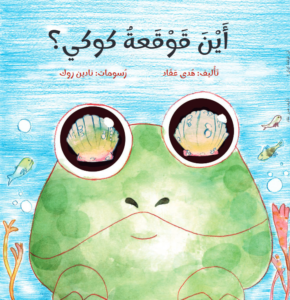 Where is Cookie’s Shell?
Where is Cookie’s Shell? 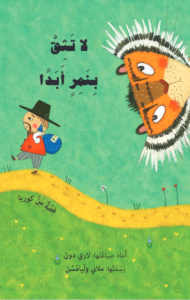 Don’t Trust The Tiger
Don’t Trust The Tiger 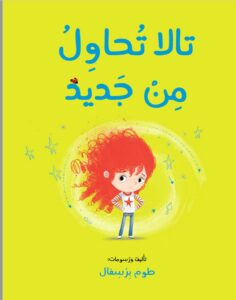 Tilda tries again
Tilda tries again 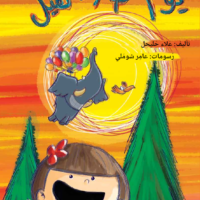 The Day the Elephant Flew
The Day the Elephant Flew 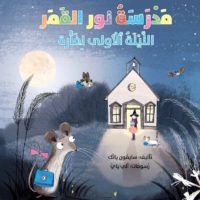 Mouse’s First Night at Moonlight School
Mouse’s First Night at Moonlight School 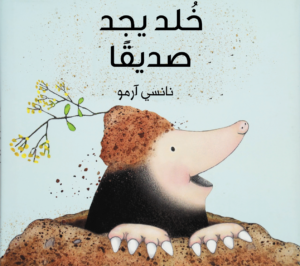 A Friend for Mole
A Friend for Mole 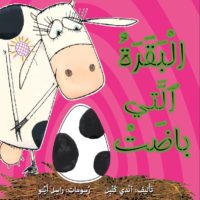 The Cow That Laid an Egg
The Cow That Laid an Egg 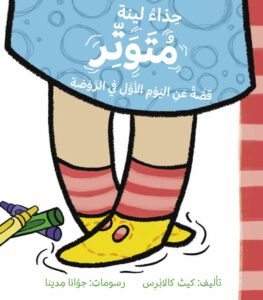 Lena’s Shoes Are Nervous
Lena’s Shoes Are Nervous 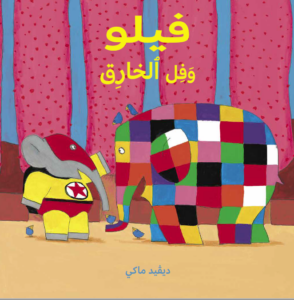 Filo and Super Phil
Filo and Super Phil 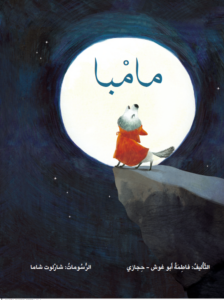 Mamba
Mamba 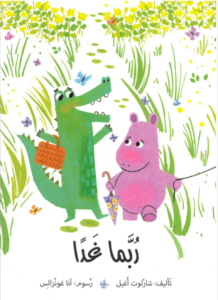 Maybe Tomorrow
Maybe Tomorrow  How Full is Your Bucket?
How Full is Your Bucket? 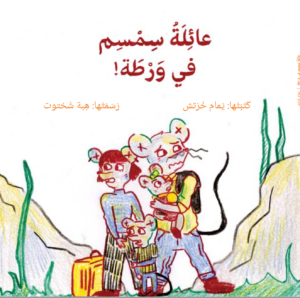 Simsim Family in Trouble
Simsim Family in Trouble 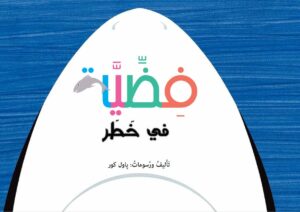 Caspion, Beware!
Caspion, Beware! 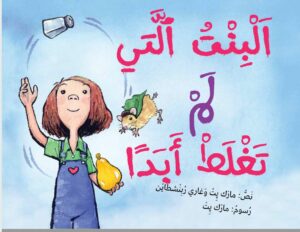 The girl who never made mistakes
The girl who never made mistakes 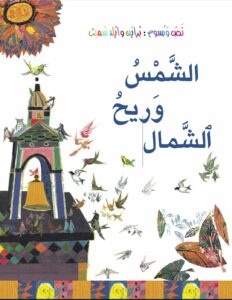 The North Wind and the Sun
The North Wind and the Sun 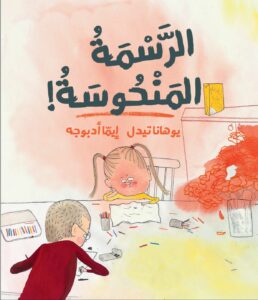 The misfortune drawing
The misfortune drawing 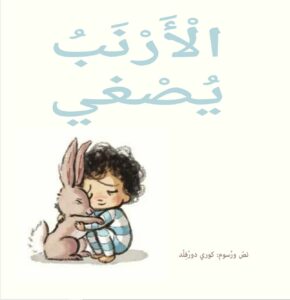 The Rabbit Listened
The Rabbit Listened 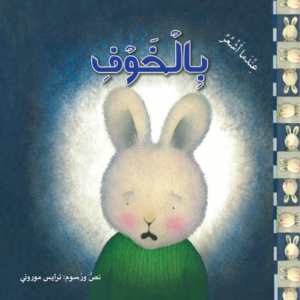 When I’m feeling scared
When I’m feeling scared 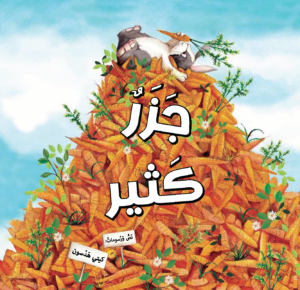 Too many carrots
Too many carrots 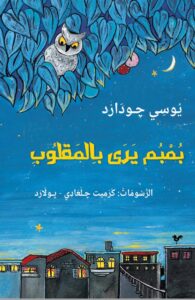 The Backward Owl
The Backward Owl 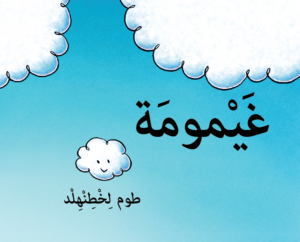 Cloudette
Cloudette 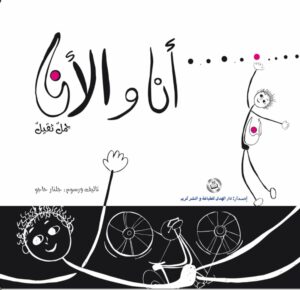 It’s Not Easy to Be Me
It’s Not Easy to Be Me  Winnie and Wilbur: The Magic Wand
Winnie and Wilbur: The Magic Wand  Oh Dear Geoffrey!
Oh Dear Geoffrey! 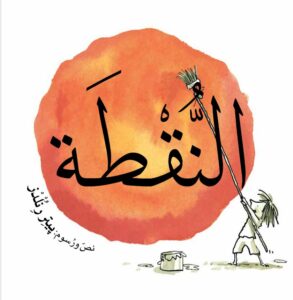 The Dot
The Dot 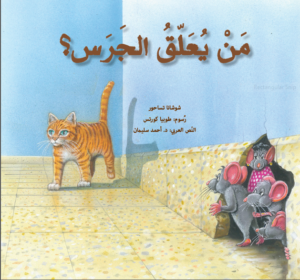 Who Will Hang the Bell
Who Will Hang the Bell 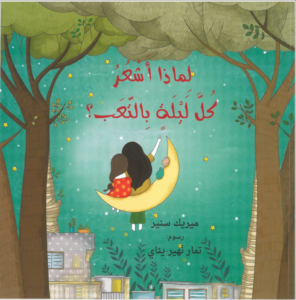 Why Am I Tired At Night?
Why Am I Tired At Night? 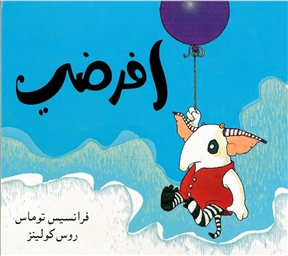 Supposing
Supposing 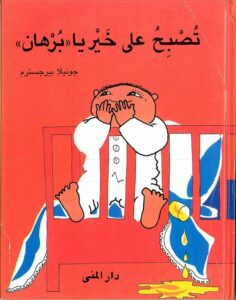 Good Night Burhan
Good Night Burhan 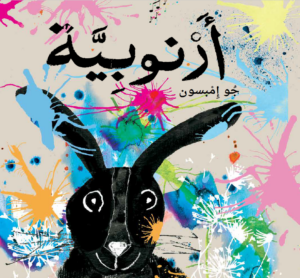 Rabbityness
Rabbityness 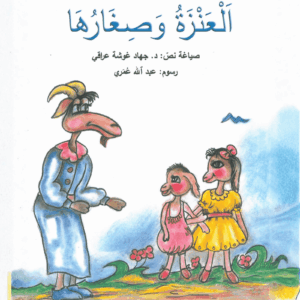 The Goat and Its Little Ones
The Goat and Its Little Ones  Nicolas Where Have You Been?
Nicolas Where Have You Been? 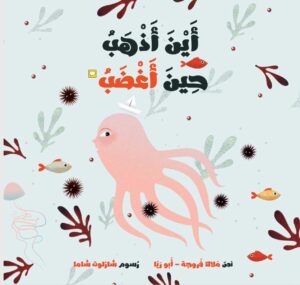 Where Do I Go When I’m Angry
Where Do I Go When I’m Angry 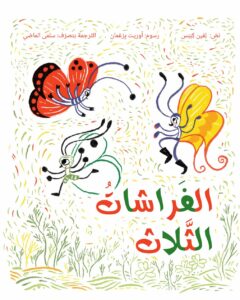 Three Butterflies
Three Butterflies 
